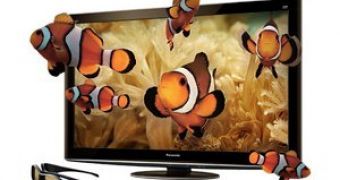The problems with all sorts of 3D displays is that they rely on special glasses, and it looks like some makers of such solutions have had enough of the general lack of cross-compatibility between such eyewear.
3D panels, recorders, cameras and any other electronic devices have been steadily gaining traction ever since early last year (2010).
Still, they are not nearly past the point where they require 3D glasses for synchronization, despite how display developers have been trying to create glasses-free models.
In fact, creating a true no-glasses panel will take years, so, in the meantime, it is in everyone's best interest for regular products to be as convenient and easy to use as possible.
One of the biggest hurdles is the fact that most 3D TVs or monitors aren't compatible with glasses from other makers. To solve this, 3D active glasses standards have started being researched.
Back in the first half of March, for instance, CEA (the Consumer Electronics Association) announced it had begun to develop this very thing.
Now, it looks like Panasonic and XPAND 3D were the first to the punch, having developed the M-3DI standard for cinema projection, home projectors, 3D TVs and computers.
Besides the two companies above, the standard is supported by Mitsubishi, ViewSonic, Seiko and FUNAL, while licensing should be possible starting in April.
"Panasonic has led in Full HD 3D innovation through the development of technologies that enable consumers to have a truly immersive experience with our 3D VIERA HDTV's and Blu-ray 3D players," said Hirotoshi Uehara, director of the Television Business Unit, Visual Products and Display Devices Business Group of Panasonic’s AVC Networks Company.
"Now, we are excited to be joining XPAND 3D and the other participants of the M-3DI initiative to make Full HD 3D TV even more widely accessible. Joining forces with other 3D product manufacturers to standardize active-shutter 3D eyewear will help ensure that consumers have a superlative 3D experience at home and in the movie theater. This is a major step toward creating truly universal 3D eyewear."

 14 DAY TRIAL //
14 DAY TRIAL //